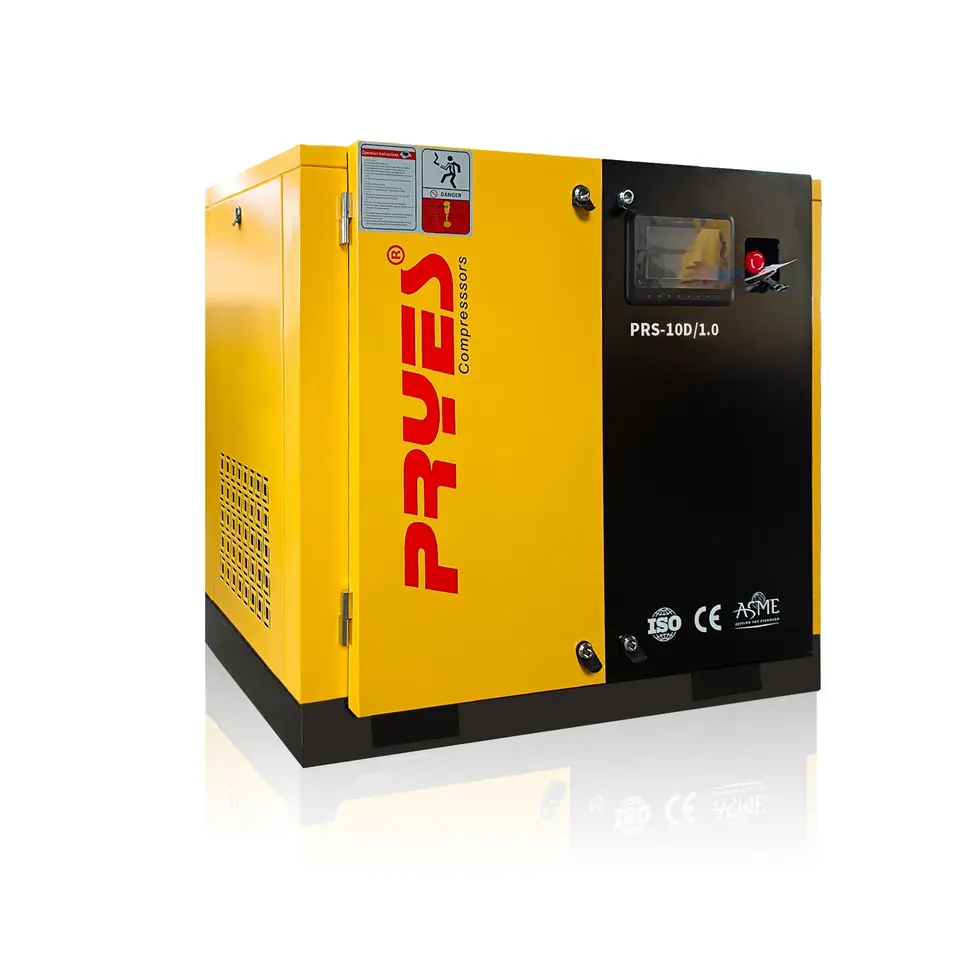Air Compressor Dryer
Refrigeration Type Air Dryer
Frozen type air dryer by lowering the temperature of compressed air to close to the freezing point of water, that extra water vapor condense into liquid water, thus and flow separation.
Refrigerant dryers are the most common type of drier technology used by many industries. As the name suggests, heat exchangers are used to cool compressed air which will condense the bulk amount of water vapor within the air.
Refrigerant dryers are the most commonly used dryers in the industry and consist of an air-to-air heat exchanger and an air-to-refrigerant heat exchanger. The heat exchangers remove moisture from your compressed air by condensation of water within.This is essential to protect compressed air systems and every piece of equipment fed by compressed air from the harmful effects of moisture.
The most important criterion is to keep the relative humidity of compressed air below 50%.
Both air-cooled and water-cooled refrigerant dryers are available. Basically, the dryers cool down the warm wet air coming from the compressor, When the temperature of compressed air reduces, moisture condenses and is drained from the compressed air with the help of a high-efficiency water separator.
After that, compressed air is reheated to around room temperature so that condensation does not form on the outside of the pipe system. This heat exchange between ingoing and outgoing compressed air also reduces the temperature of the incoming compressed air, and as such reduces the required cooling capacity of the refrigerant circuit.
